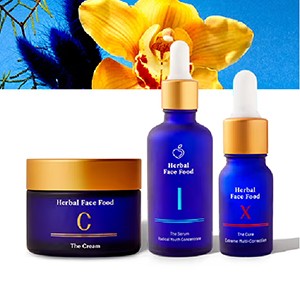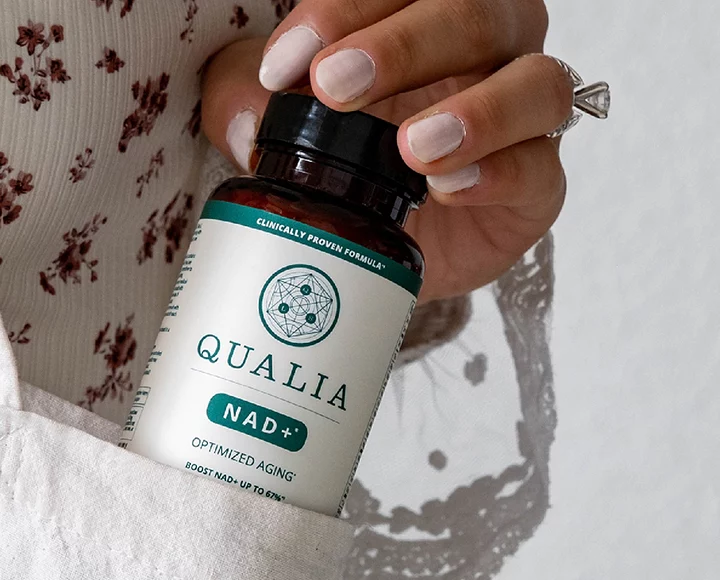Sure, you’ve tossed rosemary and dill into recipes for flavor, but did you know these everyday herbs are actually powerhouses of inflammation-fighting, immunity-boosting and detoxifying nutrients on the same level as some of your favorite supplements? These delicate greens host a high concentration of health perks and are already fun to cook with. Holistic nutritionist, Kristin Dahl, breaks down the benefits of ten of these leafy wonders here…
Herbs are one of nature’s greatest medicines, and incorporating them into your meals is one of the fastest ways to upgrade your health routine! All herbs contain an array of healing properties and work to support cleansing and detoxification while simultaneously boosting immunity. Basic ones – like basil, parsley and cilantro – all work to reduce inflammation, support liver function and aid in the clearance of heavy metals from the body.
Not only are these plants deeply restorative, but they also add texture, flavor and an element of beauty to every meal. For an instant boost of nutrition, incorporate a variety of herbs into your juices, smoothies, soups, salads and grain dishes daily. My favorite way to incorporate them is to add them to salads or grain dishes, but they are also a lovely addition to a fresh juice, adding depth, complexity and flavor.
Adding a variety of herbs to our daily meals makes for deeply nourishing, healing and satisfying cuisine. Here are a few ways to eat more, and how your body is benefiting from each…
PARSLEY
This herb is full of powerful nutrients! It contains vitamins A and C, and just one tablespoon offers more than half of your recommended daily intake of vitamin K, a nutrient that’s essential for healthy blood clotting and bone health. Parsley is also high in folate and iron and works to support liver cleansing.
How to use: Add parsley to your salad, green juice, grain dish or tomato sauce. It’s also a lovely addition to vegetable sautés or grilled fish.
CILANTRO
Cilantro is loaded with fiber and iron and supports the clearance of heavy metals from the body. Also known as coriander, this powerful healing herb is added to dishes around the world to lower cholesterol, balance blood sugars and reduce inflammation. Cilantro also contains volatile oils with antimicrobial properties that may work to fight off bacteria contracted from contaminated foods.
How to use: I love adding cilantro to salads, soups and green juices. It’s also a delicious way to upgrade your pesto!
BASIL
Basil is known to calm nerves. It’s also a good source of fiber and has a detoxifying effect on the liver. Loaded with antioxidant and anti-inflammatory properties, basil can also help support cardiovascular health and is known to help fight respiratory infections, regulate diabetes and decrease body pain and inflammation.
How to use: Add basil to your salads and sauces, or make a pesto. It’s also lovely in water or served as an iced tea.
OREGANO
Oregano is most known for its antibacterial and antifungal properties. Its volatile oils are thought to be a highly effective fighter against food-borne illnesses, common colds, flus and respiratory infections. Oregano also contains numerous phytonutrients that function as potent antioxidants, working to prevent cellular damage throughout the body.
How to use: Oregano is incredibly versatile and can be used in soup, stews, pizza and pasta. Oil of oregano can be used to fight off infection.
DILL
Dill is a fantastic source of antioxidants, such as beta-carotene. It’s also full of calcium, iron and magnesium, which all help to support bone density. Dill’s volatile oils help to neutralize environmental toxins and may protect the body from cancer-causing free radicals.
How to use: I love adding dill to sauerkraut, fresh salads and pestos. It’s also nice with egg dishes and baked fish.
ROSEMARY
Rosemary contains compounds, such as carnosic acid, that have been shown to fight cancer cells. It also contains antioxidants and compounds with anti-inflammatory properties. In addition, rosemary provides iron for respiratory health, calcium for strength and fiber to support digestion. Rosemary’s potent aroma is also said to improve memory and enhance mental performance.
How to use: Add a couple sprigs to your meat dish. Infuse your olive oil or bake it with roasted root vegetables.
LAVENDER
These little purple flower buds are excellent for promoting sleep and alleviating anxiety. Lavender also contains antioxidants known as polyphenols that fight belly bloating. Its fragrance is calming, relaxing and balancing, both physically and emotionally. Therapeutic-grade lavender is great for the skin and can be used to cleanse cuts, bruises and skin irritations.
How to use: Add a few drops of lavender essential oil to your diffuser and let it run while you sleep. Drink lavender tea, or steep and mix with lemons for lavender lemonade!
SAGE
Sage is commonly used for gastrointestinal health, but has also been used to treat depression, memory loss and Alzheimer’s disease. Women can use sage tea to treat menstrual pain or to reduce hot flashes during menopause. It also has antiseptic and antioxidant properties, which can help fight premature aging. For decades, sage has also been used as a natural remedy to reduce inflammation.
How to use: Add sage to your salad, savory dishes or roasted root vegetables. It’s also lovely as a healing tea.
THYME
This herb has long been used as an herbal remedy for respiratory problems, such as bronchitis, whooping cough and sore throats. It is also commonly used for its antiseptic properties due to thymol, which is a naturally occurring compound that can destroy harmful organisms.
How to use: Thyme is great to boost flavor in soups, salads and chicken dishes.
MINT
Mint is a great source of vitamin A, providing more than half of your recommended daily intake in just two tablespoons. In addition, mint is helpful for treating irritable bowel syndrome and gastrointestinal disorders. Mint is also useful for treating colds, throat inflammation, sinus infections and respiratory infections.
How to use: Add to juices, smoothies and salads, or add to your water.
The Chalkboard Mag and its materials are not intended to treat, diagnose, cure or prevent any disease. All material on The Chalkboard Mag is provided for educational purposes only. Always seek the advice of your physician or another qualified healthcare provider for any questions you have regarding a medical condition, and before undertaking any diet, exercise or other health related program.












